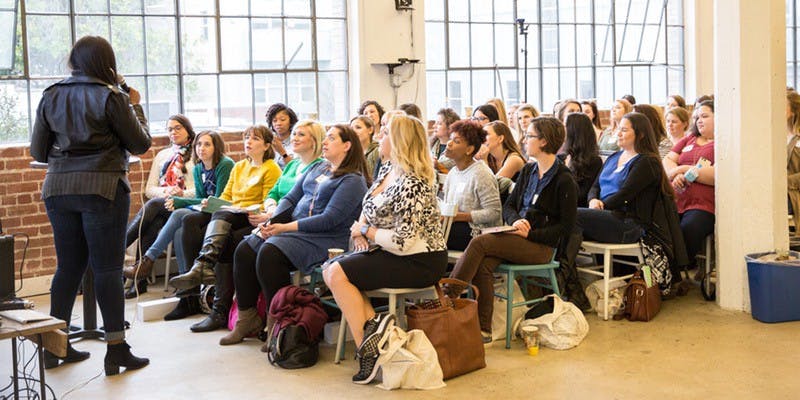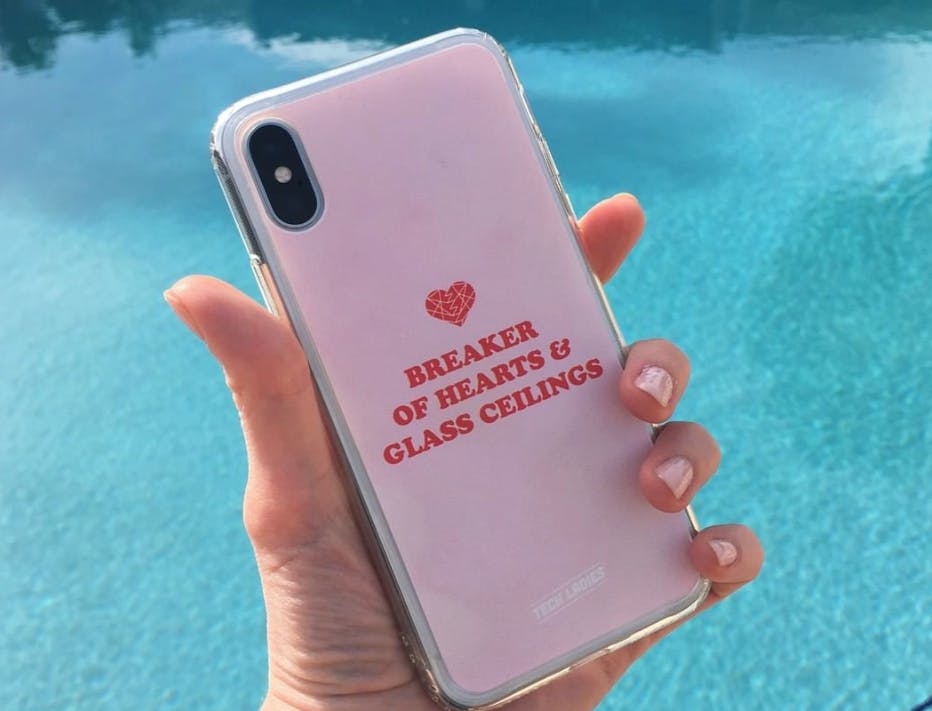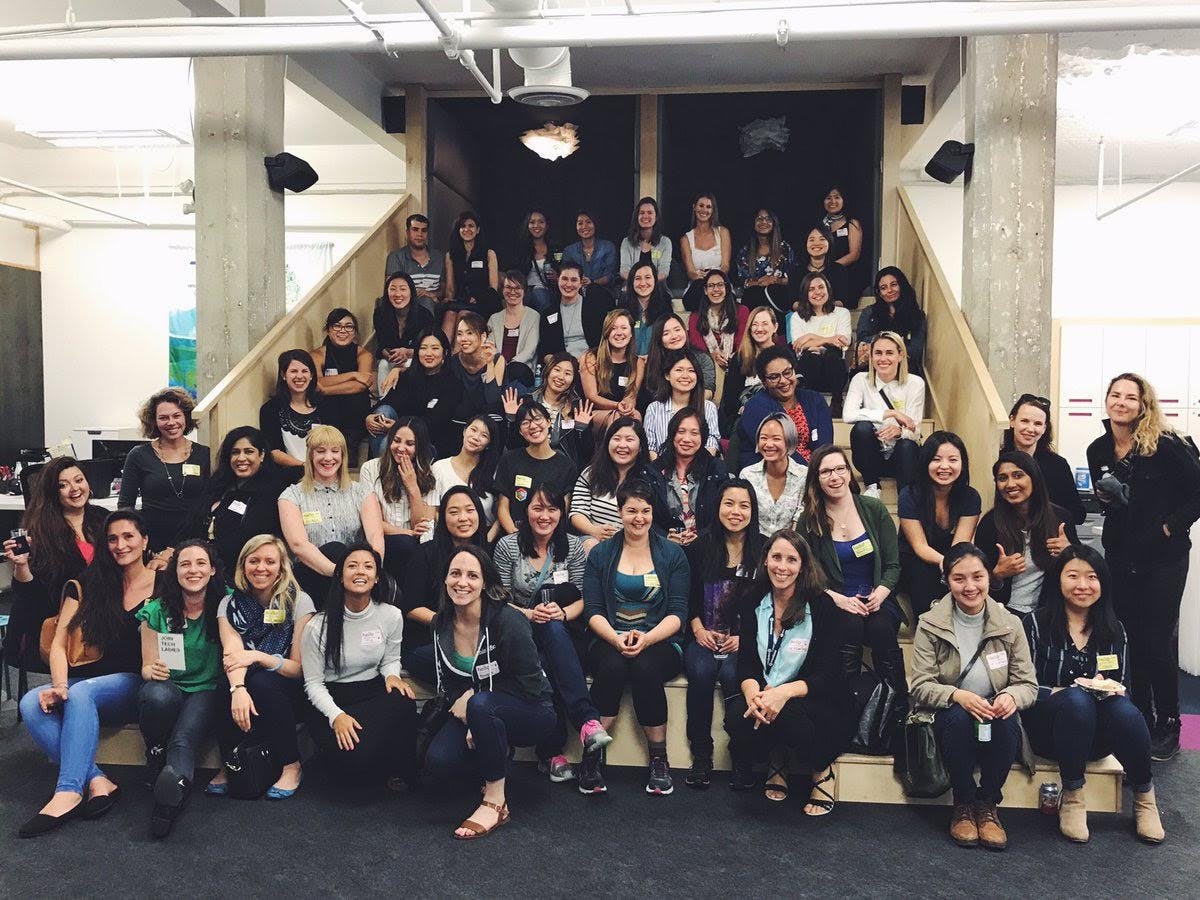Q&A: How to Bootstrap a Community Business and Grow to 50K Members

An inside look at how to scale a community-based business without raising any money.
I'm Allison Esposito Medina. I founded a bootstrapped community and business called Tech Ladies in 2016, which has since grown to 50,000 members. We help women find jobs in tech, accelerate their careers, and support each other. Before this, I worked in marketing and product at Foursquare, at a startup called Oyster, and at Google. I'm passionate about turning side projects into a full-time jobs, working remotely, bootstrapping, community, and diversity and inclusion in tech.

Product Hunt: Can you share how you've gone about growing the Tech Ladies community? And now that it's at 50,000 members, what are some ways you're keeping community members engaged and active?
Allison Esposito: We've grown through word of mouth, events, our newsletters and our active online community. To keep community members engaged, we encourage discussions around hashtags that we've created. A few examples (#YEPIMADETHAT or #YEPIDIDTHAT is for sharing your wins at work, #HELPASISTEROUT is for anonymous advice about struggles at work, #DISCUSS for chatting and #RESOURCE for when you want to share something useful with the group). This structure has helped a lot!
PH: What are some current ways you're growing Tech Ladies?
AE: Since we've launched the site and our job board, we've worked with over 1,000 companies to help them hire more women in tech. We've also launched events in cities all around the U.S. and Canada with our City Organizers, a series of webinars so Tech Ladies can learn new things all over the world, and we've continued to build our online community. We also launched a paid version of the Tech Ladies community who we call our Founding Members, and we hook them up with perks, free events, and a smaller group to network with. So it's been busy! Now that we have all of this built out, our plan for 2019 is to make all of it stronger and better and to grow to 3x our size (we are on track to do this).

PH: With so many software tools available (like Slack, Facebook Groups, etc.), how do you add value to communities versus interruption? What are some of the best ways you've added value to the Tech Ladies community?
AE: I think the platform you use depends on your goals and the size of your community. For example, we run Tech Ladies using Facebook Groups instead of Slack, because with 50,000 members, we feel a Slack community would quickly get overwhelming. Plus, it will attract those who have time to chat in a Slack group instead of checking Facebook posts at the end of their day, or on a break.
As for best ways — figure out what things you see repeated or asked in your community often, and then build conversations around those. For us, we often saw that people wanted to ask questions anonymously about the troubles they were having at work, so we created an anonymous hashtag #HELPASISTEROUT to gather advice for these folks.
PH: What were some lessons you took from Google and Foursquare to successfully run your own startup?
AE: I learned a lot from everywhere I've worked about the pluses and minuses of being big vs. being small. As a marketer, it was a dream to work at Google and release our marketing to millions and millions of people. But there are limitations to that as well (you can't build as a strong of a voice and you can't take as many risks). At Foursquare, I learned a lot about product since we took so many chances with our product. I also learned the importance of listening to your customers and building only what they will actually use.
PH: What have been some of the biggest hurdles you had to overcome in growing Tech Ladies?
AE: Our biggest hurdles have been around being a bootstrapped company. Although we've been profitable from day one, being bootstrapped means having to problem solve creatively, plan carefully, and make all the right bets at the right time (pressure!). On the flip side, being bootstrapped means we've had to be laser-focused and prioritize on an almost daily basis. Those are good things for any community and any business, so it's both a blessing and a challenge.
PH: At what point did you transition from working on Tech Ladies as a side project to building this business full-time? Were there any validating moments or experiences that gave you the assurance to make that transition?
I left my job at Google in October of 2016 to work on Tech Ladies full-time. I always tell people with side hustles to "let your business tell YOU when it's ready to go full-time." This simply means, when you have more work coming in than you can handle in the hours between 6pm-midnight, then you're probably ready to go full-time. Another thing to watch for is when you're saying no to great opportunities coming in just because of time. Once that started happening with us, I knew I had to give it my full attention. Using these two things as a guide also removes the tendency to glamorize what working on your side hustle full-time will be like (spoiler alert: it's probably one million times harder than your day job, but also awesome.) Go for it when the time is right.
PH: What's one thing nobody told you about scaling a community? Also, how did you adapt the principles and vision for why you started the community as it grew larger?
AE: Before I got into this, I would have never understood how important it is to have admins on the group as well as a stringent Code of Conduct. A community with a few hundred can self-manage, but once you hit several thousands, you really need safeguards in place and humans to moderate. We found that the principles and vision for starting the community scales quite nicely. We build solutions around the things we see our community members need, instead of what we think would be cool, and that's worked out well for us.
PH: What's been your favorite memory since founding Tech Ladies?
AE: My favorite moment so far has been when we were asked to write a report for the United Nations, with the help of input from our community. That was such an honor. On a weekly basis, I have moments where I tear up reading stories of women in the community who found their dream job, made a new friend, or successfully negotiated a raise at work with the support of the community. It's really rewarding to see these positive experiences unfold.

PH: While building the community, what's a lesson you've learned about women in tech?
AE: Women in tech have been through a lot more than people realize. I don't think a lot of people understand how much hurt and pain can happen at work (for all genders). Everyone thinks their horror stories about work are unique to them and they're not! So one thing I've learned is that women in tech are insanely resilient to stay in an industry that is really challenging for them. The good news is that things are getting better and will continue to improve.
Comments (2)
Fajar Siddiq
Serial Entrepreneur, Singapore
Raphael Allstadt
too long didn't launch ;D
More stories

Aaron O'Leary · Announcements · 2 min read
Introducing Shoutouts

Finn Lobsien · Opinions · 5 min read
Can Devin AI Replace Product Managers?

Aaron O'Leary · News · 2 min read
Meet Nvidia's new localized AI chatbot

Sarah Wright · News · 2 min read
The top 15 AI products from 2023



